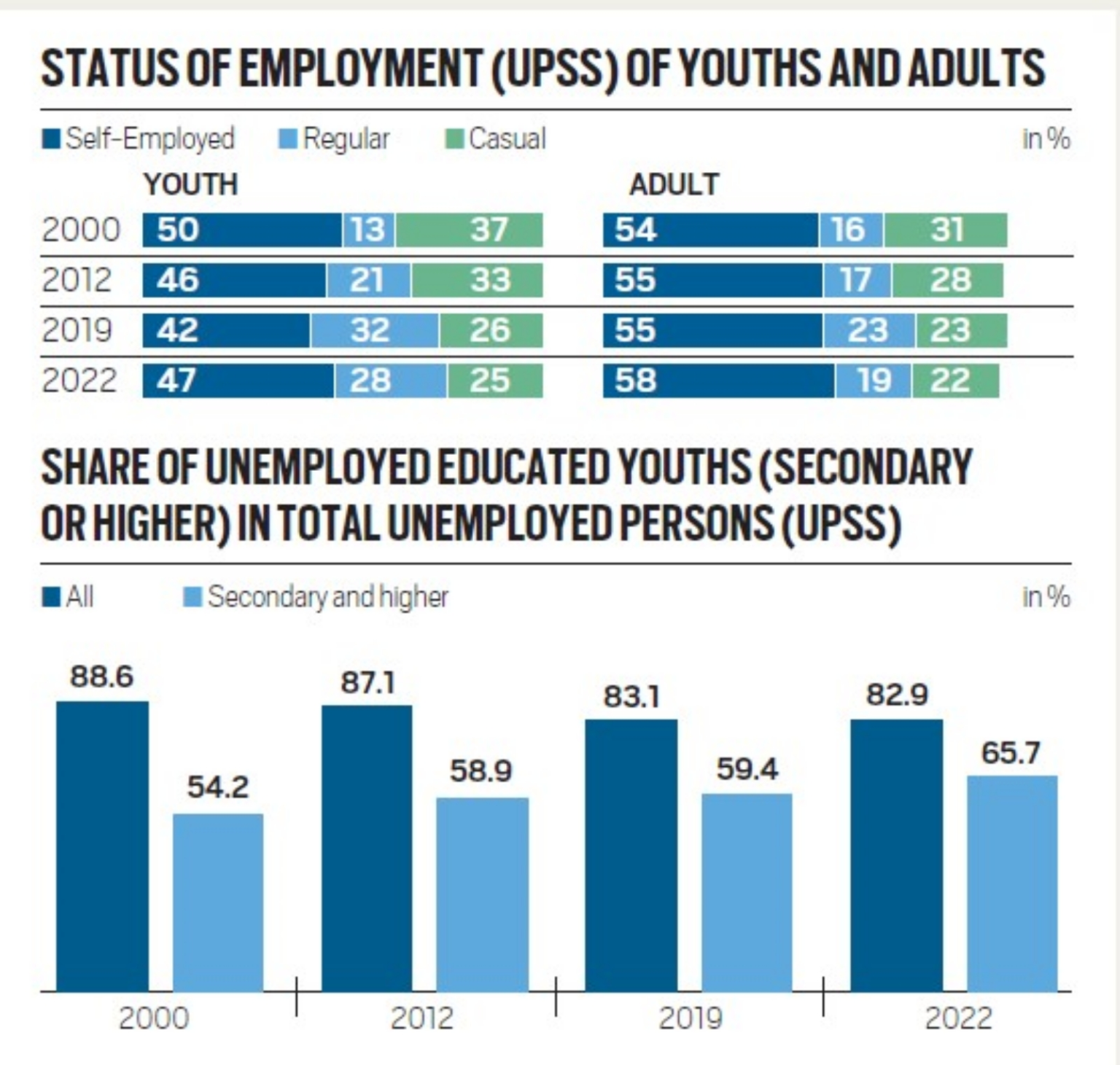Bihar
India Employment Report 2024
- 30 Mar 2024
- 3 min read
Why in News?
According to the India Employment Report 2024, released by the Institute for Human Development and International Labour Organisation (ILO) the ‘Employment Condition Index’ of the states have improved between 2004-05 and 2021-22.
Key Points
- The "Employment Condition Index" has improved between 2004-05 and 2021-22, but some states such as Bihar, Odisha, Jharkhand, and UP have remained at the bottom throughout this period.
- While some others Delhi, Himachal Pradesh, Telangana, Uttarakhand, and Gujarat have stayed at the top.
- The index is based on seven labour market outcome indicators:
- percentage of workers employed in regular formal work;
- percentage of casual labourers;
- percentage of self-employed workers below the poverty line;
- work participation rate;
- average monthly earnings of casual labourers;
- unemployment rate of secondary and above-educated youth;
- youth not in employment and education or training.
- The report has flagged concerns about poor employment conditions: the slow transition to non-farm employment has reversed; women largely account for the increase in self-employment and unpaid family work; youth employment is of poorer quality than employment for adults; wages and earnings are stagnant or declining.
- Employment Quality: Almost 82% of the workforce is engaged in the informal sector, and nearly 90% is informally employed. Self-employment and unpaid family work has also increased, especially for women.
- Participation of Women: The female Labour Force Participation Rate (LFPR) in India remains among the world’s lowest. Female LFPR declined by 14.4% points (compared to 8.1% points for males) between 2000 and 2019.
- The trend reversed thereafter, with female LFPR rising by 8.3% points (compared to 1.7% points for male LFPR) between 2019 and 2022.
- Structural Transformation: The share of agriculture in total employment fell to around 42% in 2019 from 60% in 2000. This shift was largely absorbed by construction and services, the share of which in total employment increased to 32% in 2019 from 23% in 2000.
- Youth Employment: There has been a rise in youth employment, but the quality of work remains a concern, especially for qualified young workers. In 2022, the share of unemployed youths in the total unemployed population was 82.9%.





